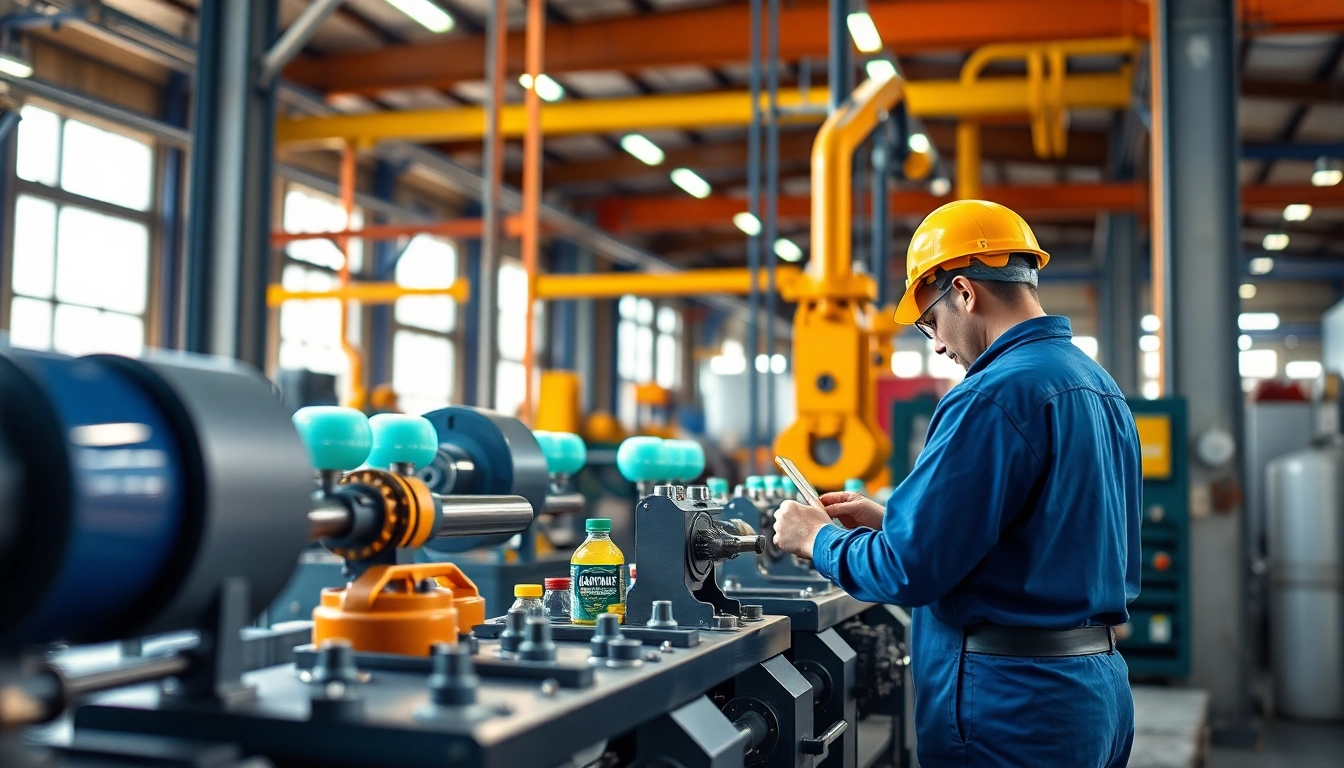1. Introduction to Filling Machines
In the fast-paced world of manufacturing and packaging, efficiency and precision are paramount. One crucial component in this realm is the filling machine, a device that automates the process of dispensing liquids, powders, or granular products into various containers. This article will delve into the role of these machines in modern industry, highlighting key aspects that potential purchasers need to consider and identifying leading filling machine manufacturers that provide solutions tailored to diverse business needs.
1.1 What are Filling Machines?
Filling machines are specialized machinery designed for filling products into containers automatically. They are commonly found in industries such as beverage, food, pharmaceutical, and chemical. The extent of automation and the type of filling mechanism utilized can vary significantly based on the specific requirements of the application. Understanding the diversity of filling machines is vital to make informed procurement decisions.
1.2 Importance of Filling Machines in Packaging
Filling machines play an essential role in the packaging process. They enhance efficiency, ensure uniformity, and reduce the risk of human error. By automating the filling process, companies are able to improve production speeds while simultaneously decreasing production costs. Furthermore, filling machines help maintain product integrity and quality by minimizing contamination risks associated with manual filling processes.
1.3 Overview of Common Filling Machine Types
Filling machines can be categorized into several types based on their application:
- Liquid Filling Machines: Used for liquids of varying viscosities, from water to thick sauces.
- Powder Filling Machines: Ideal for dry products such as flour or sugar.
- Granular Filling Machines: Suited for products like granola and nuts.
2. Understanding Different Types of Filling Machines
2.1 Liquid Filling Machines
Liquid filling machines, perhaps the most well-known type, are designed to dispense liquid products into containers. They can use various methods for filling, including gravity filling, piston filling, and vacuum filling, each suited to different product types. For example, piston fillers are particularly effective for viscous products, while gravity fillers work well for thin liquids. These machines can be further categorized into:
- Volumetric Fillers: Measure and dispense a predetermined volume of liquid.
- Flow Meter Fillers: Rely on flow rate sensors to control the filling volume.
- Timed Fillers: Fill a container based on a set time interval.
2.2 Powder Filling Machines
Powder filling machines are designed to handle dry products that can range from fine powders like flour to granules like coffee. These machines typically use auger mechanisms or vibratory systems to ensure accurate filling. They are equipped with advanced controls to manage flow rates and ensure that the right amount of product is dispensed consistently.
2.3 Granular Filling Machines
Granular filling machines operate similarly to powder filling machines but are optimized for larger particle sizes. They use techniques such as volumetric or weigh filling to ensure accuracy. Manufacturers of granular products often rely on these machines to promote efficiency and maintain product quality.
3. Key Features to Consider When Selecting Filling Machines
3.1 Production Capacity
Understanding the production capacity requirements is essential when selecting a filling machine. Businesses must assess their expected output and ensure that the selected machine can meet these demands without causing bottlenecks. Depending on the scale of operation, filling machines can range from high-speed models capable of filling thousands of bottles per hour to small, manual systems suited for artisanal production.
3.2 Precision and Accuracy
Precision in filling is critical to minimize product waste and ensure customer satisfaction. Variability in fill levels can lead to regulatory scrutiny, particularly in food and pharmaceutical industries. Therefore, businesses should prioritize filling machines with precise measurement capabilities and low tolerances. Reviewing past performance and reliability metrics from manufacturers can offer valuable insights into precision levels.
3.3 Ease of Use and Maintenance
The operational complexity of a filling machine can vary widely. Favorable machines often feature user-friendly interfaces, quick-change setups, and straightforward maintenance protocols. Effective training for operators is essential to ensure that the machinery is utilized correctly and maintained adequately, reducing downtime and prolonging machine life.
4. Leading Filling Machine Manufacturers in the Industry
4.1 Notable Brands and Their Offerings
Several key players dominate the filling machine landscape, each offering unique benefits tailored to specific industry requirements:
Accutek Packaging Equipment Company, Inc.
Accutek is renowned for its extensive range of filling machines, capable of accommodating various filling requirements. They provide solutions for industries such as beverage, food, and pharmaceuticals, ensuring high-quality performance across diverse applications.
Cozzoli Machine Company
Cozzoli specializes in liquid filling and has diversified into capping and washing systems. Their machines are built with durability in mind, making them a trusted choice in the manufacturing sector.
Volumetric Technologies
Volumetric Technologies prides itself on American-made filling solutions, focusing on reliability and innovation. Their filling systems are designed for flexibility to meet diverse industry needs.
Oden Machinery
Oden Machinery’s products are comprehensive, covering a wide range of filling systems. Their emphasis on quality ensures long-lasting machinery known for maintaining efficiency over time.
E-PAK Machinery
E-PAK provides high-quality liquid filling machines tailored for the bottling industry. Their equipment is designed for easy integration within existing production lines.
4.2 Comparison of Features and Pricing
When evaluating different manufacturers, businesses should consider the following features:
- Customization Options: The ability to tailor machines to specific needs can provide significant operational benefits.
- Warranty and Support: Strong after-sales support can reduce long-term operational risks.
- Pricing Models: Understanding pricing structures can empower organizations to make informed financial commitments.
4.3 Customer Reviews and Recommendations
Customer feedback on filling machines can provide insights into their performance and reliability. Many industry reviews emphasize the importance of ongoing support and machine longevity, particularly in high-demand environments. Before finalizing purchases, analyzing customer testimonials and case studies can be valuable for mitigating risk.
5. Conclusion and Future Trends in Filling Machine Manufacturing
5.1 Innovations in Filling Technology
The filling machine industry is witnessing continuous innovations, particularly in automation and connectivity. Manufacturers are increasingly integrating IoT technology to enable real-time monitoring and predictive maintenance, which can significantly enhance operational efficiency.
5.2 Sustainability in Filling Machine Production
Sustainability considerations are becoming increasingly prominent, with manufacturers looking to reduce waste and energy consumption. Innovations in machine design and materials can lead to more environmentally friendly solutions.
5.3 The Future of Automation in Filling Processes
The trend toward greater automation continues, with advancements in robotics and AI promising to revolutionize how filling operations are conducted. Smart filling machines will not only improve accuracy but also facilitate seamless integration across entire production lines.









